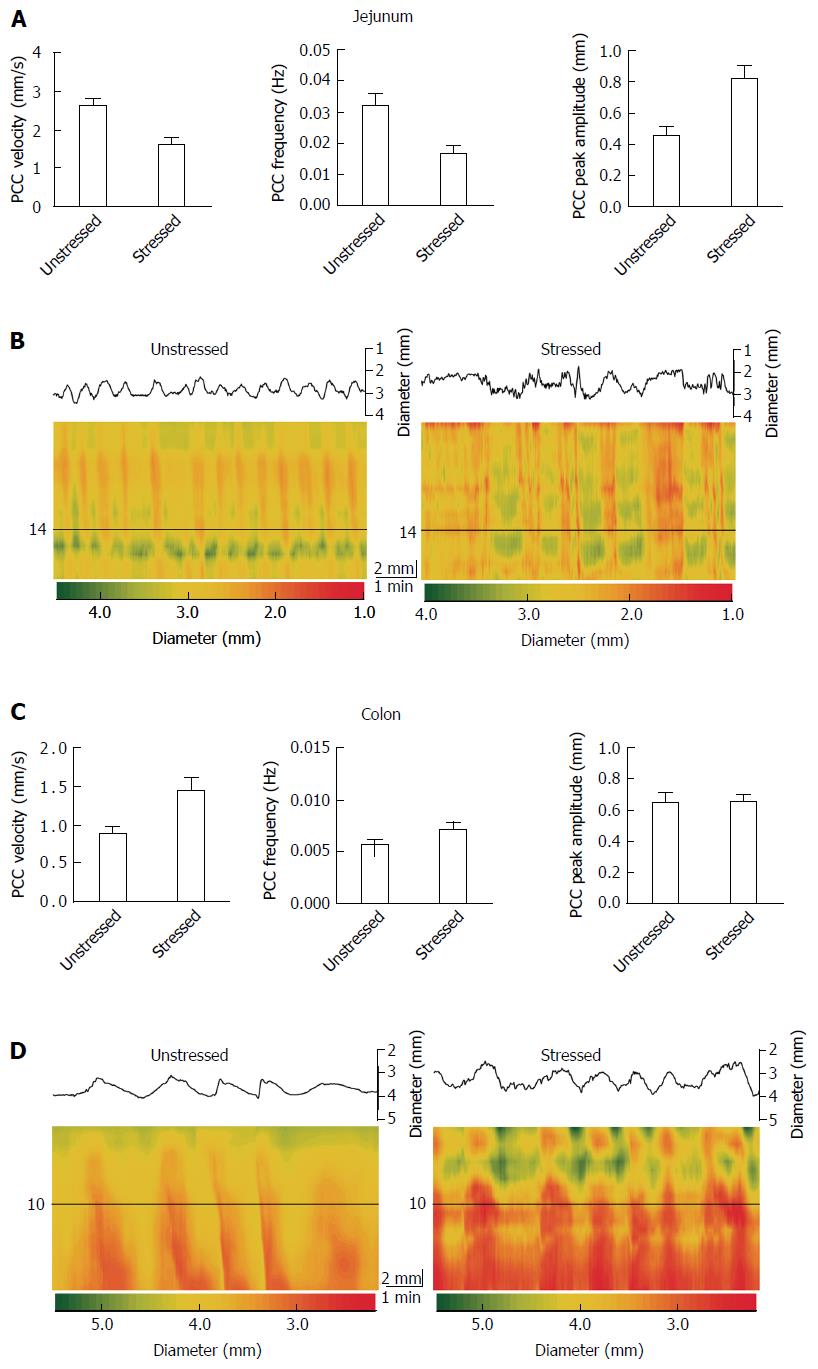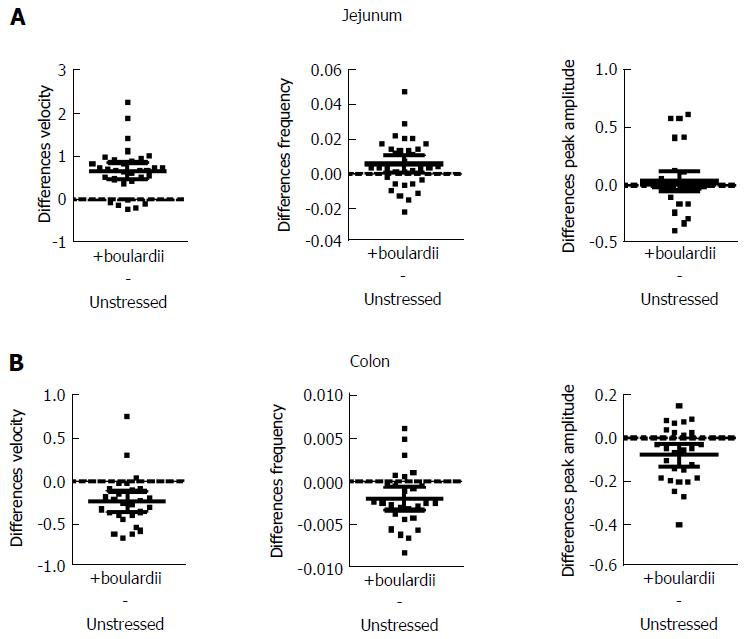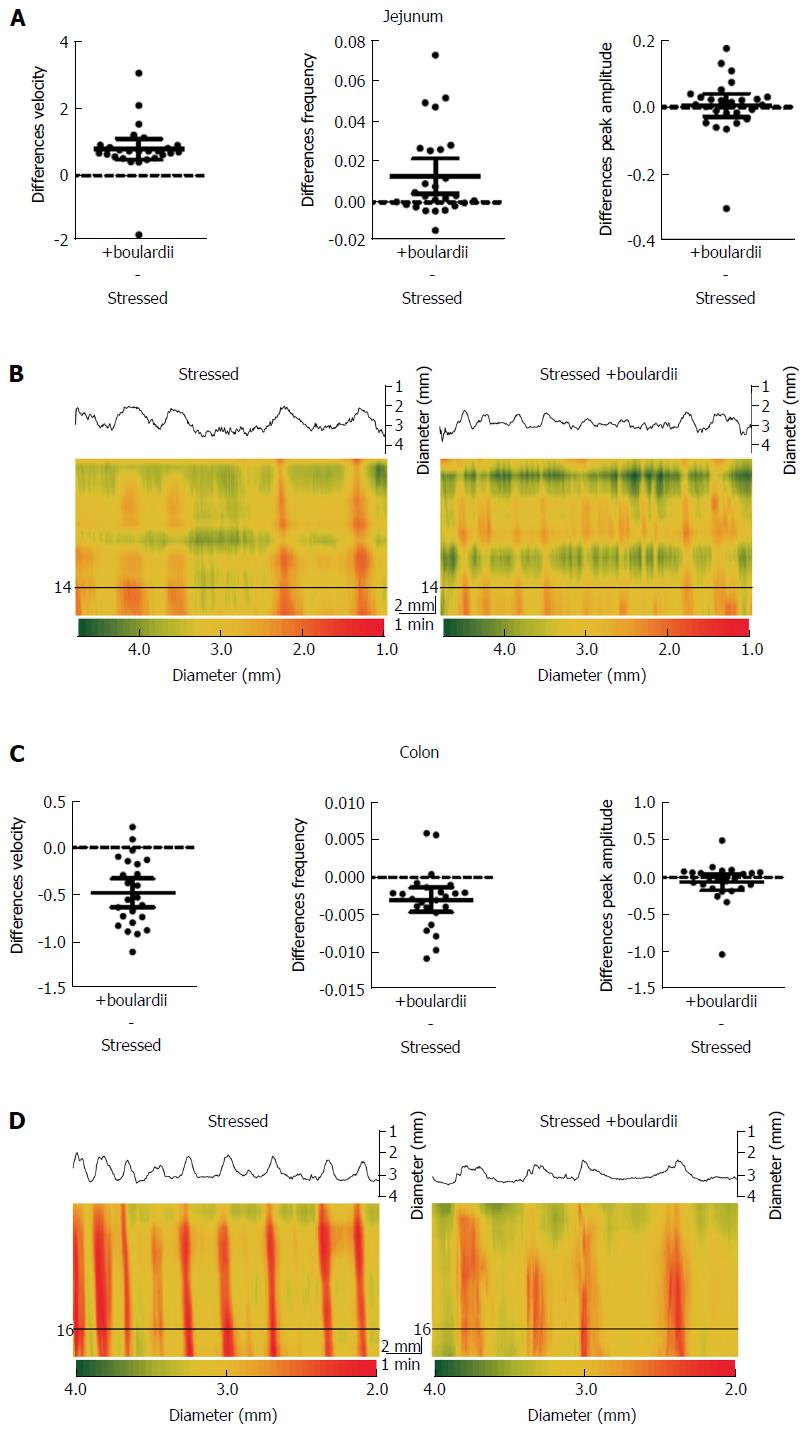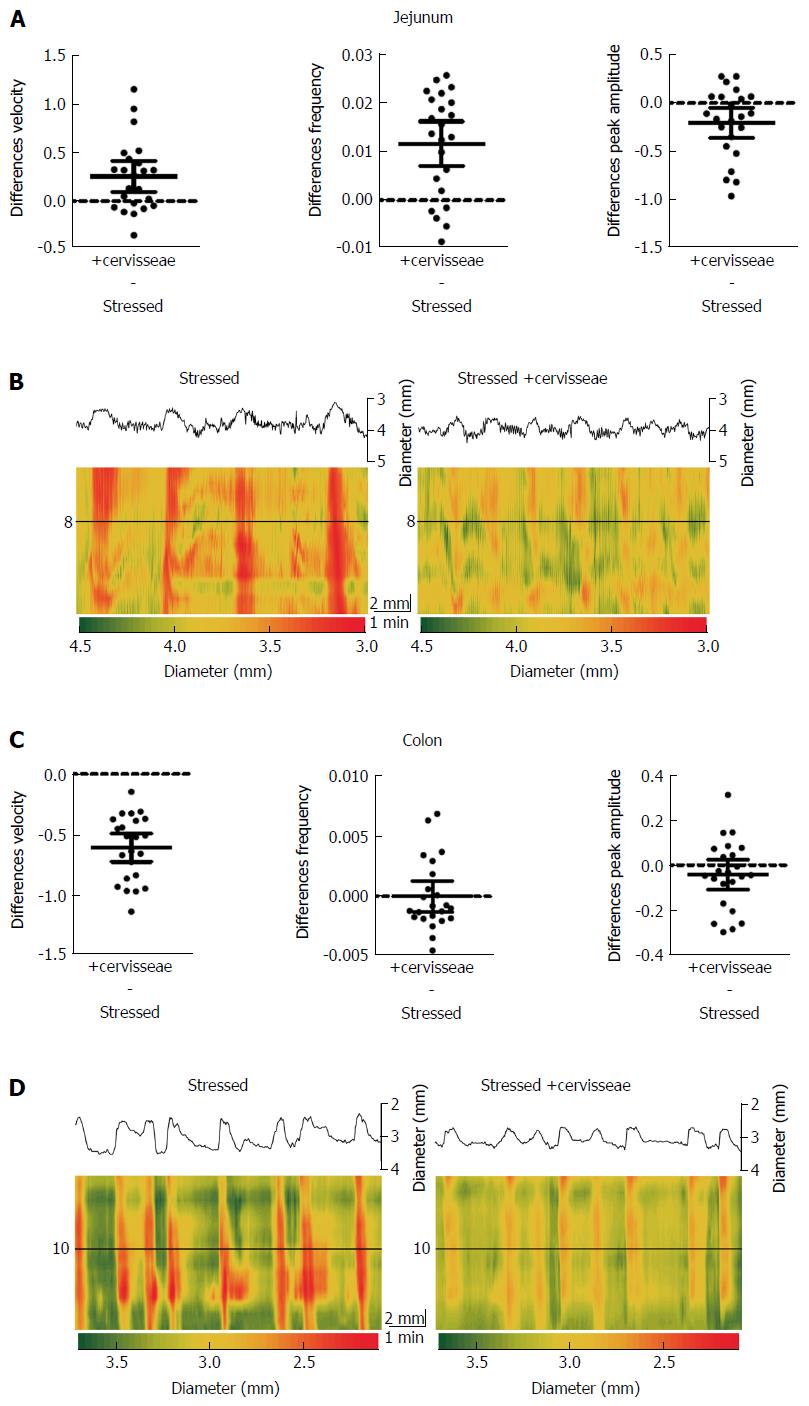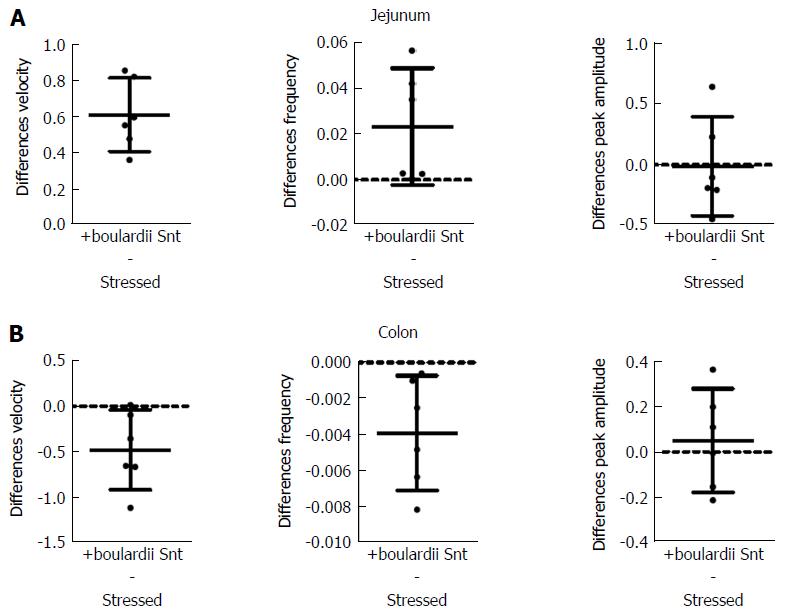Copyright
©The Author(s) 2016.
World J Gastroenterol. Dec 28, 2016; 22(48): 10532-10544
Published online Dec 28, 2016. doi: 10.3748/wjg.v22.i48.10532
Published online Dec 28, 2016. doi: 10.3748/wjg.v22.i48.10532
Figure 1 Effects of acute restraint stress on gut contractility, ex vivo.
A and C: Plot PCC velocity, frequency, and peak amplitude in the jejunum and colon respectively. The bar graphs show the mean difference between the control and treatment parameters. Stress decreased PCC velocity (P < 0.001) and frequency (P < 0.001) and increased peak amplitude in the jejunum (P < 0.001). Stress increased PCC velocity (P < 0.001) and frequency (P = 0.008), but had virtually no effect on peak amplitude in the colon (P = 0.902); B and D: Spatiotemporal diameter maps demonstrating contractility of the gut over time. The colour scale of the heat maps denote gut diameter starting from red for the smallest diameter (contraction) to green for the largest diameter (relaxation). The contractions run orally to anally across the vertical axis, and across time along the horizontal axis. Above the heat map is a plot of diameter vs time or a single time-point along the vertical (oral-anal) axis, which is denoted by the horizontal line. The total vertical length of the map is 20 mm and time is 480 s for the jejunum and 560 s for the colon. The scale bar measures 1 min (60 s) horizontally and 2 mm vertically. All subsequent spatiotemporal (Dmaps) followed the same parameters.
Figure 2 Saccharomyces boulardii increased motility across most parameters in the unstressed jejunum and decreased motility across parameters in the unstressed colon, ex vivo.
Mean differences in parameters are plotted (unpaired) and standard deviations of the mean are indicated. A: Saccharomyces boulardii (S. boulardii) increased PCC velocity and frequency, but had little to no effect on peak amplitude, in the unstressed jejunum; B: S. boulardii decreased PCC velocity, frequency, and peak amplitude in the unstressed colon.
Figure 3 Saccharomyces boulardii reduced the effects of acute stress on the small and large intestine.
A and C: Mean paired differences, using 95%CIs across parameters for jejunum and colon [(Stressed + S. boulardii) - stressed]. Saccharomyces boulardii (S. boulardii) increased jejunal velocity and frequency after stress. S. boulardii decreased colonic velocity and frequency after stress. S. boulardii had little to no effect on peak amplitude in the stressed jejunum and colon. Mean differences straddled 0 for peak amplitude in both jejunum and colon; B and D: Dmaps comparing stressed jejunum and colon before and after addition of S. boulardii.
Figure 4 Saccharomyces cerevisiae slightly increased parameters in both the unstressed small and large intestine (excluding colon peak amplitude).
A: 95%CIs for paired mean differences were near 0 for jejunal peak amplitude. Jejunal PCC velocity and frequency slightly increased; B: Saccharomyces cerevisiae (S. cerevisiae) had less potent effects in the colon, slightly increasing PCC velocity and frequency, but decreasing peak amplitude. PCC: Propagating contractile clusters.
Figure 5 Saccharomyces cerevisiae helped to reduce dysmotility in the stressed gut, with most visible effects on the jejunum.
A and C: Saccharomyces cerevisiae (S. cerevisiae) increased stressed jejunal propagating contractile clusters velocity and decreased velocity in the stressed colon. S. cerevisiae increased jejunal frequency and slightly decreased peak amplitude in both the colon and jejunum. 95%CIs straddled 0 for mean paired differences in colonic frequency; B and D: Dmaps representing the stressed gut before and after addition of S. cerevisiae. S. cerevisiae helped to restore jejunal motility after stress. S. cerevisiae had less potent effects on the stressed colon, but helped to ease some of the dysmotility.
Figure 6 Addition of Saccharomyces boulardii supernatant to the stressed lumen recapitulated much of the effect of the boulardii yeast.
A: Saccharomyces boulardii (S. boulardii) Snt increased PCC velocity and frequency in the stressed jejunum. 95%CIs straddled 0 for mean paired differences in jejunal peak amplitude, showing no effect; B: S. boulardii Snt decreased PCC velocity and frequency in the stressed colon. S. boulardii Snt had little effect (very little increase) on stressed colonic peak amplitude and again the 95%CIs straddled 0 for mean paired differences. PCC: Propagating contractile clusters.
Figure 7 Addition of Saccharomyces cerevisiae supernatant to the stressed lumen had some therapeutic effect, but not across parameters.
A: Saccharomyces cerevisiae (S. cerevisiae) Snt had little effect on stressed jejunal PCC velocity. S. cerevisiae Snt increased stressed jejunal PCC frequency and decreased peak amplitude; B: S. cerevisiae Snt decreased both stressed colonic PCC velocity and peak amplitude. There was no effect on stressed colon PCC frequency.
- Citation: West C, Stanisz AM, Wong A, Kunze WA. Effects of Saccharomyces cerevisiae or boulardii yeasts on acute stress induced intestinal dysmotility. World J Gastroenterol 2016; 22(48): 10532-10544
- URL: https://www.wjgnet.com/1007-9327/full/v22/i48/10532.htm
- DOI: https://dx.doi.org/10.3748/wjg.v22.i48.10532









